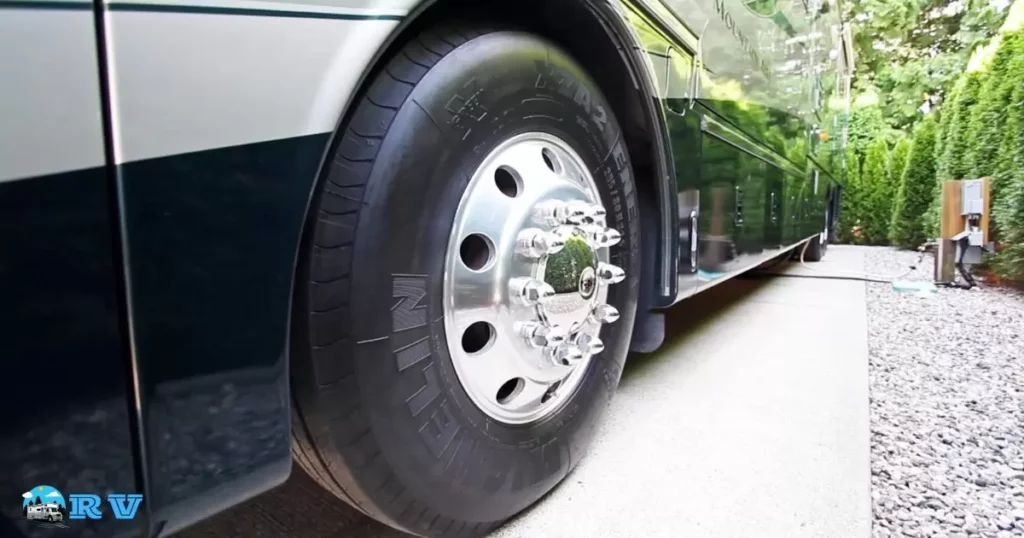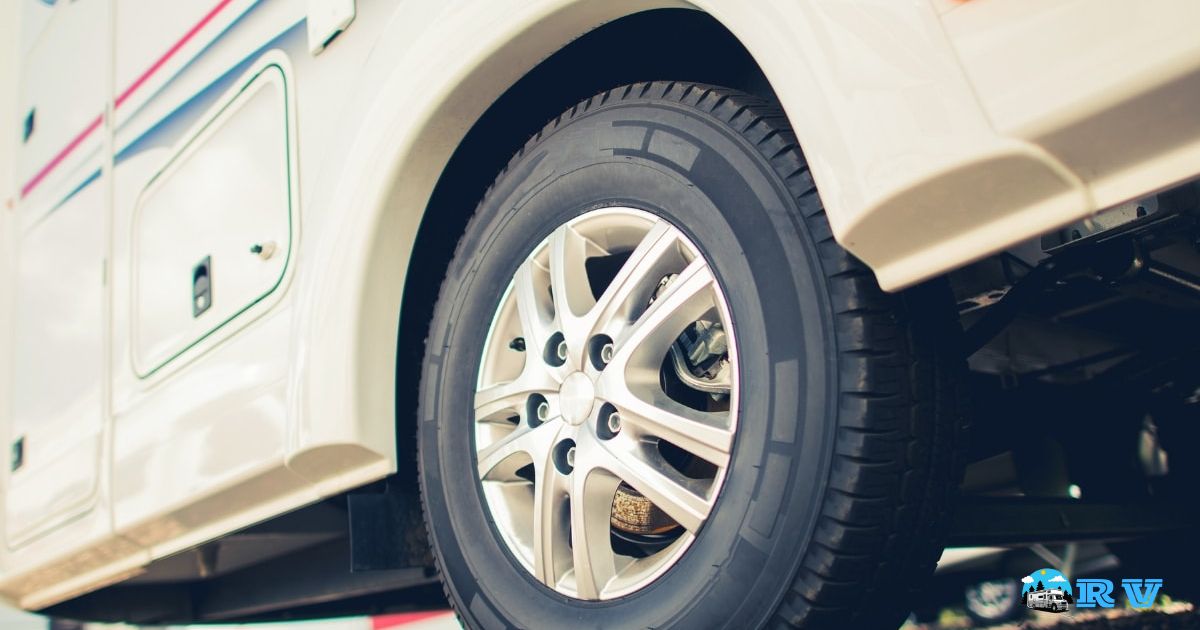Protecting RV tires from dry rot is essential for maintaining the longevity and safety of your recreational vehicle. Dry rot is a common issue where tires deteriorate due to exposure to the elements, leading to cracks and reduced tire life.
Are you tired of dealing with costly tire replacements and the safety risks of dry rotted RV tires. Discover how to protect RV tires from dry rot and save money in the long run while ensuring a smooth and worry free travel experience. Whether you’re a seasoned RVer or new to the world of recreational vehicles.
Protecting RV tires from dry rot involves storing your RV properly when not in use, keeping them clean, and using tire covers to shield them from harsh weather conditions. Regularly inspecting and maintaining the correct tire pressure is also crucial in preventing dry rot.
RV Tire Maintenance Basics
Proper RV tire maintenance is crucial in preventing dry rot, extending tire life, and ensuring a safe and enjoyable journey. RV tires are exposed to a variety of environmental factors that can lead to dry rot, such as UV rays, heat, and moisture. To protect your RV tires from dry rot, start with the fundamentals of tire care. Regularly cleaning your RV tires is the first step in their maintenance.
RV Tire Cleaning Techniques
Cleaning RV tires is essential for maintaining their longevity and appearance. To clean them, start by using a mixture of mild soap and water to scrub away dirt and grime. For stubborn stains, consider a specialised tire cleaner. Finally, rinse thoroughly and protect with a UV-resistant tire dressing to prevent cracking and fading.
Importance of Correct Tire Pressure for RV
Maintaining the right tire pressure for your RV is crucial. Proper inflation ensures safety and stability on the road. It also improves fuel efficiency and extends the life of your tires. So, check your RV’s tire pressure regularly to enjoy worry-free adventures.
Choosing the Right RV Tire Covers

Investing in high-quality RV tire covers is an effective way to protect your tires from dry rot. Tire covers shield your tires from harmful UV rays, which can cause the rubber to deteriorate over time. When selecting tire covers, opt for those specifically designed for RV use, as they are typically more durable and resistant to the elements.
Properly fitting tire covers should be snug but not overly tight. They should cover the entire tire, including the sidewalls, to provide comprehensive protection. Make sure to choose covers made from a breathable material to prevent moisture from getting trapped underneath, as this can lead to mold and dry rot.
Proper RV Storage to Prevent Dry Rot
Storing your RV correctly when not in use plays a significant role in preventing dry rot. Prolonged exposure to the elements, especially sunlight, can accelerate tire deterioration. When your RV is not in use, consider these storage tips to safeguard your tires:
Cover Your RV: Invest in a high-quality RV cover to shield your entire vehicle from UV rays and other environmental factors. This will not only protect your tires but also your RV’s exterior and interior.
Elevate Your RV: If possible, park your RV on blocks or use levelling jacks to keep the tires off the ground. This minimises the strain on the tires and prevents them from developing flat spots.
Rotate Your Tires: If you store your RV for an extended period, rotate the tires periodically. This helps distribute the weight and reduces the risk of developing dry rot in one spot.
Ventilation: Ensure proper ventilation in your storage area to prevent moisture buildup. A dehumidifier or moisture-absorbing products can be beneficial.
For long-term storage or if you’re looking to start a mobile RV repair business, consider removing the weight from the tires by using specialized RV tire cradles or stands. This minimizes pressure on the tires and helps prevent flat spots and dry rot. Always ensure your RV is parked on a stable and level surface during storage..
Key Tire Maintenance Data
| Maintenance Task | Frequency | Description |
| Cleaning RV Tires | Regularly | Use mild detergent and a soft brush. |
| Checking Tire Pressure | Monthly | Refer to RV owner’s manual for specs. |
| Replacing Tire Covers | As needed | Inspect for wear and tear. |
| Proper RV Storage Methods | Seasonal | Elevate RV, rotate tires, and use covers. |
.
Regular Inspections for RV Tire Health
Frequent tire inspections are key to catching issues early and preventing dry rot. During your inspections, look for signs of damage, such as cracks, bulges, or punctures in the tire sidewalls. Check the tread depth to ensure it meets safety standards. If you notice any irregularities, have them addressed promptly to prevent further damage.
While inspecting your RV tires, pay close attention to the valve stems and caps. Damaged valve stems can lead to slow leaks, and missing or damaged caps can allow dirt and debris to enter the valve, causing potential problems. It’s also essential to check the date code on your tires to determine their age.
Preventative Measures for RV Tire Longevity
Preventative measures are essential to protect your RV tires from dry rot. In addition to the aforementioned tips, consider these additional steps:
Tire Dressings: Some tire dressings and protectants are designed to shield tires from UV rays and moisture. Be sure to choose a product suitable for RV tires.
Avoid Harsh Chemicals: When cleaning your RV, avoid using harsh chemicals or solvents on the tires, as they can accelerate dry rot.
Regular Use: Use your RV regularly, even during storage periods, to prevent flat spots from forming.
Professional Inspection: Periodically have your RV tires inspected by a professional to detect any issues early.
Tips for RV Tire Care on the Road
While on the road, it’s essential to continue caring for your RV tires to prevent dry rot. Here are some practical tips to keep in mind:
Avoid Overloading: Adhere to the weight limits specified for your RV to prevent excessive strain on the tires.
Proper Inflation: Check tire pressure regularly, especially before long journeys. Changes in altitude and temperature can affect tire pressure.
Avoid Road Hazards: Be cautious of potholes, debris, and curbs, which can cause damage to your tires.
Balance and Alignment: Ensure your RV’s tires are balanced and properly aligned to prevent uneven wear.
Tire Covers: Consider using tire covers when parked for extended periods at campgrounds to protect from UV rays.
FAQs
How can I protect my RV tires from dry rot?
To protect your RV tires from dry rot, you can start by regularly cleaning them, maintaining the correct tire pressure, and investing in high-quality RV tire covers.
Are all tire covers suitable for RVs?
Not all tire covers are designed for RV use. It’s best to choose tire covers specifically made for RV tires as they offer better protection and durability.
How often should I inspect my RV tires for dry rot?
Regularly inspect your RV tires for signs of dry rot and other damage, ideally before each trip and during storage periods.
Can dry rot be repaired, or do I need to replace the tire?
Dry rot cannot be repaired. Once it occurs, it’s safer to replace the affected tire to ensure your RV’s safety on the road.
What is the average lifespan of RV tires?
The average lifespan of RV tires is around six to ten years, depending on various factors such as usage, maintenance, and storage conditions.
Conclusion
In the world of RV adventures, safeguarding your tires from dry rot is the key to a smoother and safer journey. By understanding the basics of RV tire maintenance, selecting the right covers, and practicing proper storage and inspections, you can enjoy your travels with peace of mind.
Weather conditions and preventative measures also play crucial roles in tire longevity, ensuring your tires remain in top shape. Whether you’re cruising through scorching deserts, chilly mountains, or tranquil campgrounds, remember to care for your RV tires to keep them rolling strong.











